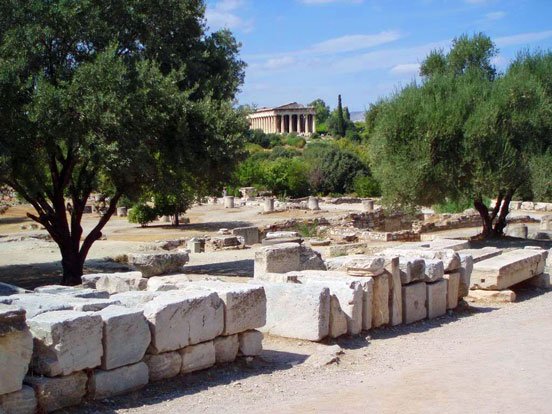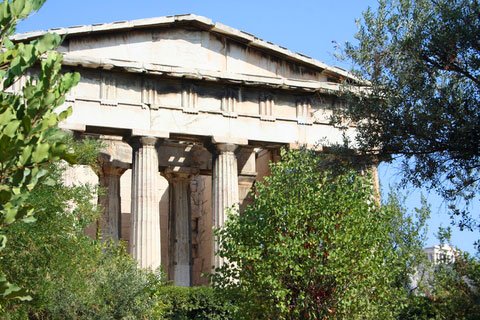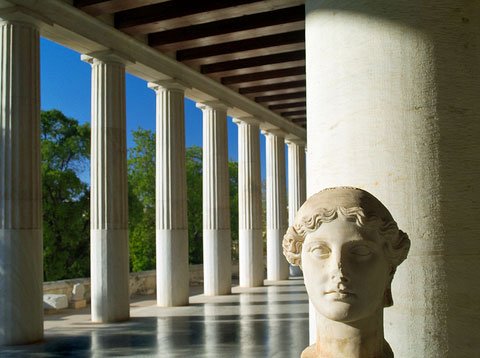The ancient greek agora was a central part of life in ancient Greece.
It contained all the essential ingredients for the people of that time to conduct their lives. Shops, meeting places, law courts, libraries, baths, halls for public functions with collonades (stoas), meeting place for those holding public office – these and many other buildings and areas served the needs of the local people.
A complex site
The ancient greek agora at Athens is one of the largest remaining from the classical world. It’s not easy for a visitor to understand, because much of the remains are just marks on the ground, or wall bases. To complicate matters further, the agora was in use for over 1000 years. During that time buildings were regularly added and demolished.

Also, be aware of the different historical eras. There were quite a few buildings in the ancient greek agora, but when the Romans came along they did what Romans did best (apart from beating everyone else in battle) – they built magnificent civic buildings. A plan of the ancient greek agora of Athens in the 4th century AD shows it stuffed full of structures with hardly any space, whereas the agora in the 5th century BC (as shown below) has far more space in it.
As you walk through the ancient greek agora at Athens – originally over 6 acres – either employ the services of a guide (and make sure they are authentic!) or use a good guide book. Otherwise it will just look like a jumble of stones, statues and lumps of marble. Note that most of the buildings in the north of the plan are difficult to get at, as modern buildings and a railway have been constructed over them.
This schematic map contains additional content and photos.
Click on grey shapes for name and description. Click on blue markers for photos.
Try the enlarged view and the satellite view (found at bottom of pop-up menu).
Earliest inhabitants
The site of the ancient greek agora was in use from about 3000 BC, in the Neolithic period. Pottery has been found in some wells which date from this period. The area was used as a burial site in Mycenaean times up until the 7th century BC.
It was developed into an ancient greek agora from the time of Solon in the early 6th century BC. Solon was the great law giver, who revised Athenian law which enabled the city to become one of the greatest powers of the classical world.

What would it have looked like?
Walking through the ancient greek agora at Athens today will actually give you a fairly good impression of how it might have appeared to the Greeks of Pericles’ day. There would have been trees to provide shade, and statues, fountains and votive offerings would be everywhere. Surrounding the central space you’d find shops in shaded collonades (stoas), temples, law courts, and places for buisnessmen to meet or just exchange news and gossip.

The Stoa of Attalos has been included on the plan of the agora although it’s from the 2nd century BC and not the 5th C. In the 1950’s it was rebuilt and is the agora museum. If you’re visiting on a hot day, standing inside in the shade will convince you why the Greeks were keen on these types of buildings.
The video below is an example of Socrates teaching in the Agora.